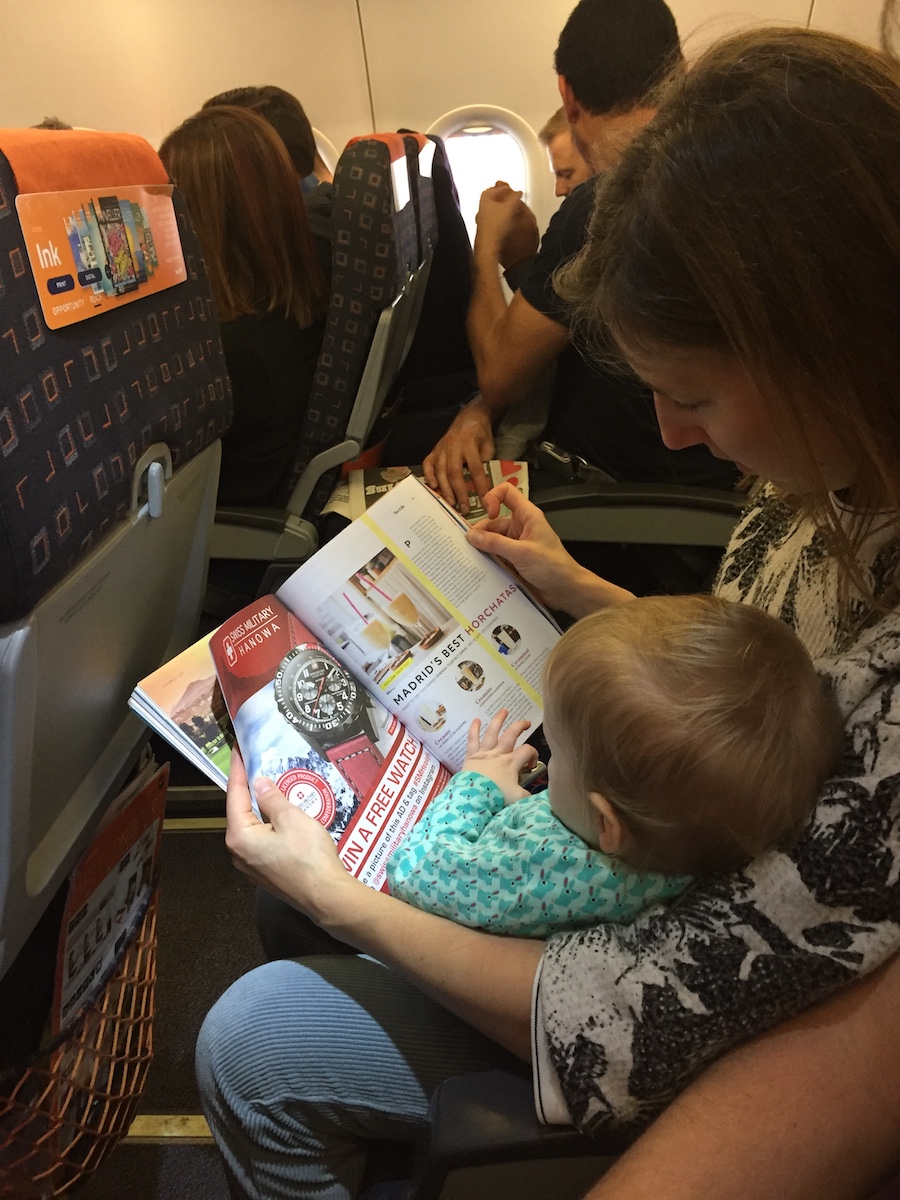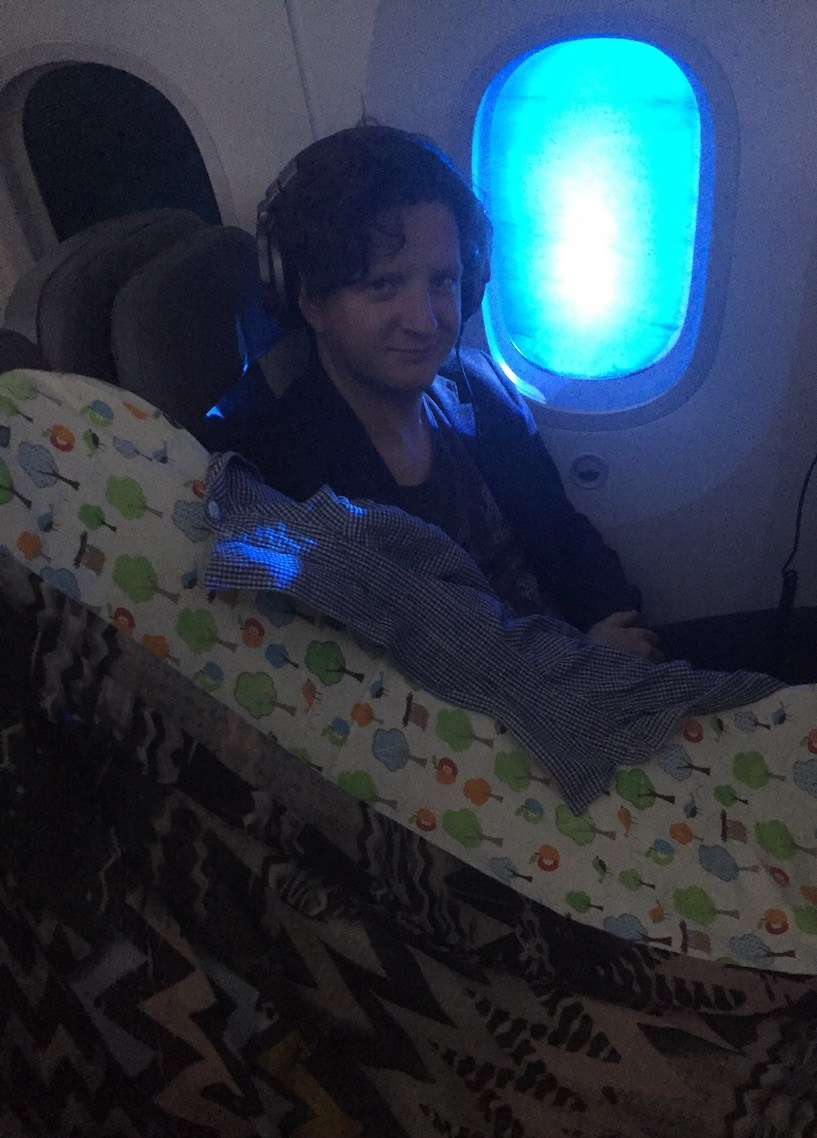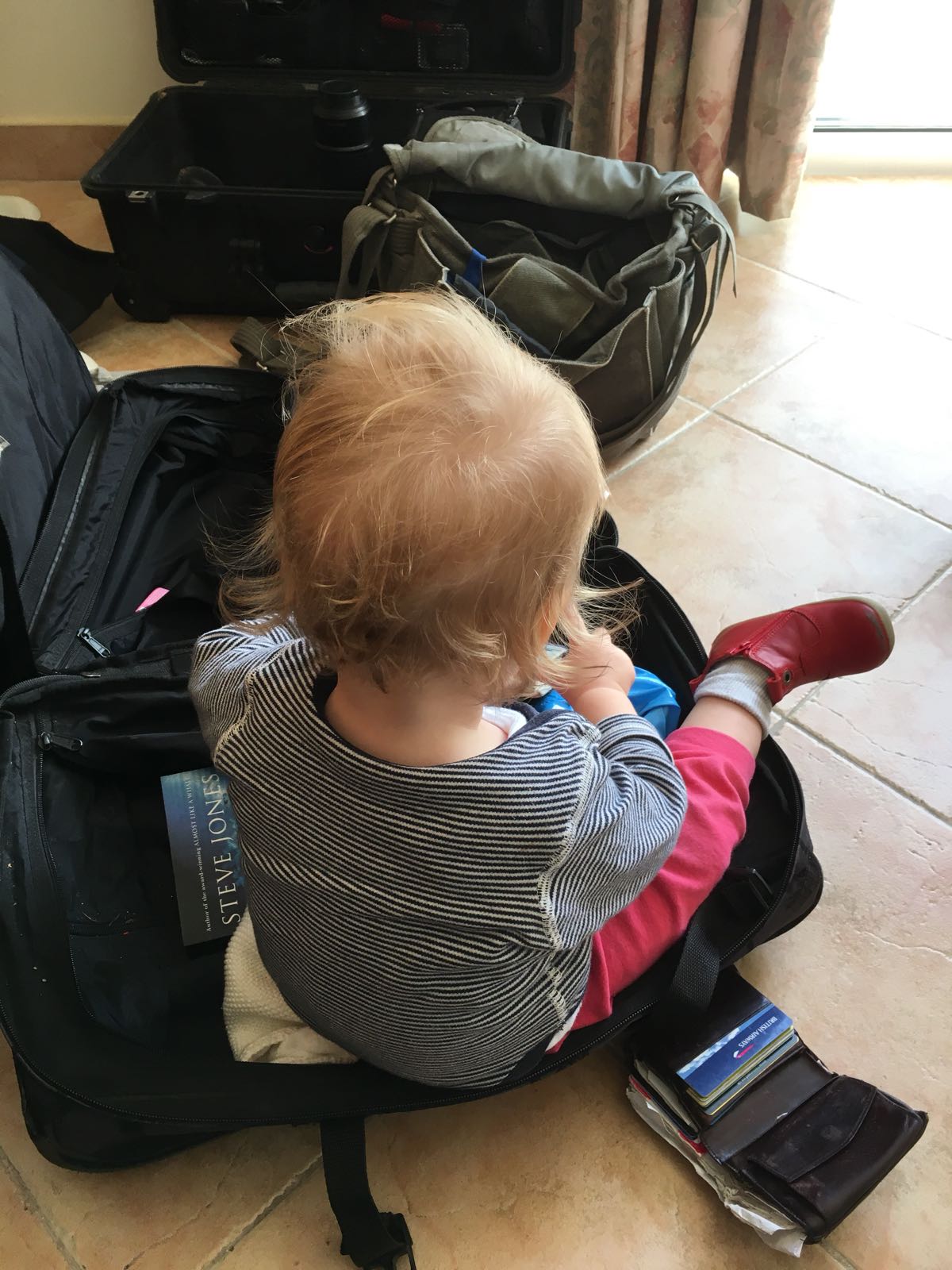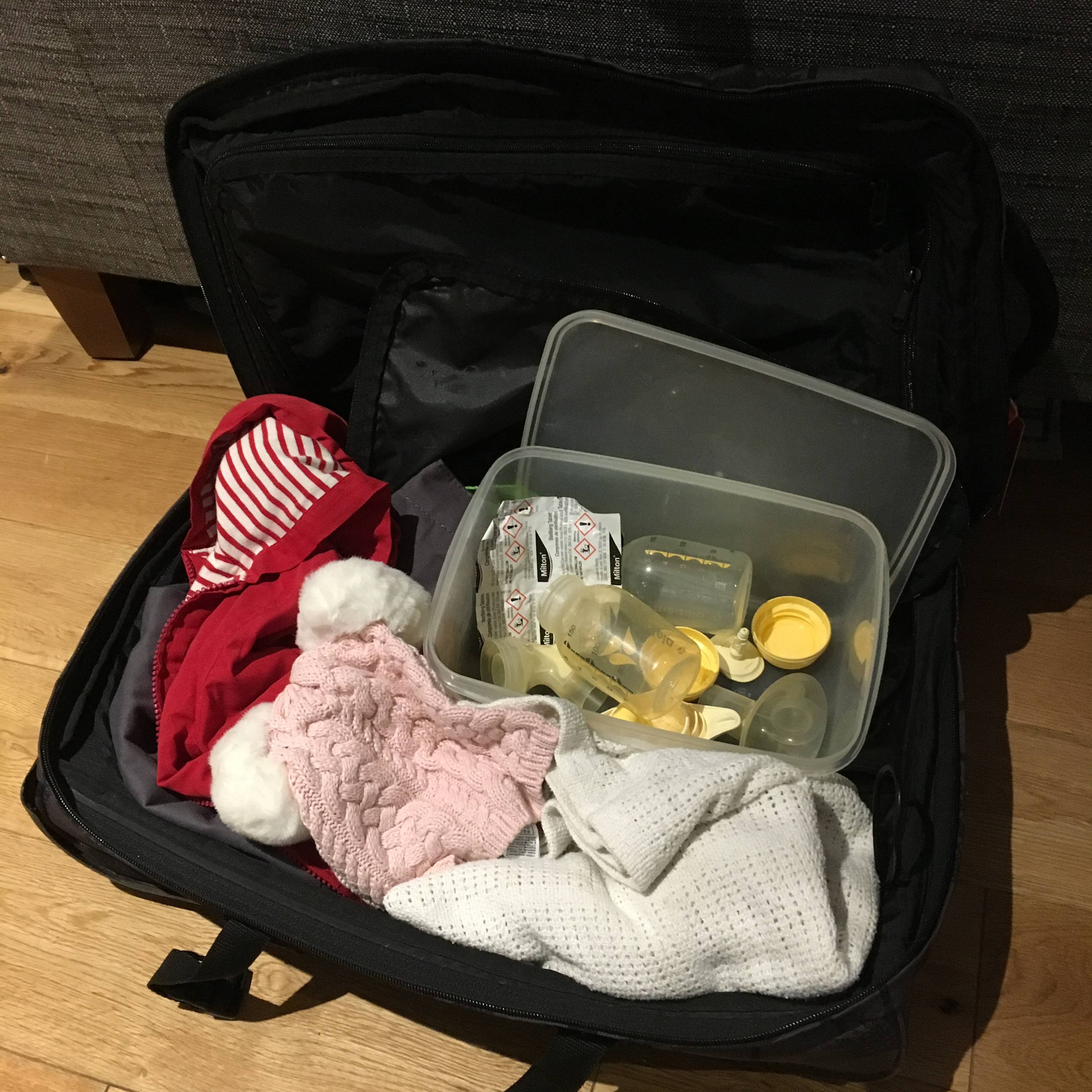I didn’t ever picture camping with a baby in my future. I’ve never really considered myself much of a camper – my parents didn’t take me camping as a child and the one trip I did with school was awful – yet in 2010 my partner and I decided that an 1980s VW campervan would be a much better investment than a boring old hatchback. Since then we’ve been all over the UK in it (and the newer one we bought when the first one got too unreliable), as well as to France, Sweden and Norway, squeezing in camping trips when we can alongside my work trips, touring with my partner’s band, and myriad friends’ weddings.
We’ve taken the baby girl camping in the van several times now and here’s what we’ve learned so far,* divided into 10 sections: tent or campervan; packing; choosing a campsite; choosing a pitch; setting up camp; sleeping; feeding; nappy changing and potties; bath time; and insects. I deal with the specifics of festival camping in another post, so do check that out if you’re planning on taking your little one to a musical festival.
Tent or campervan when camping with a baby
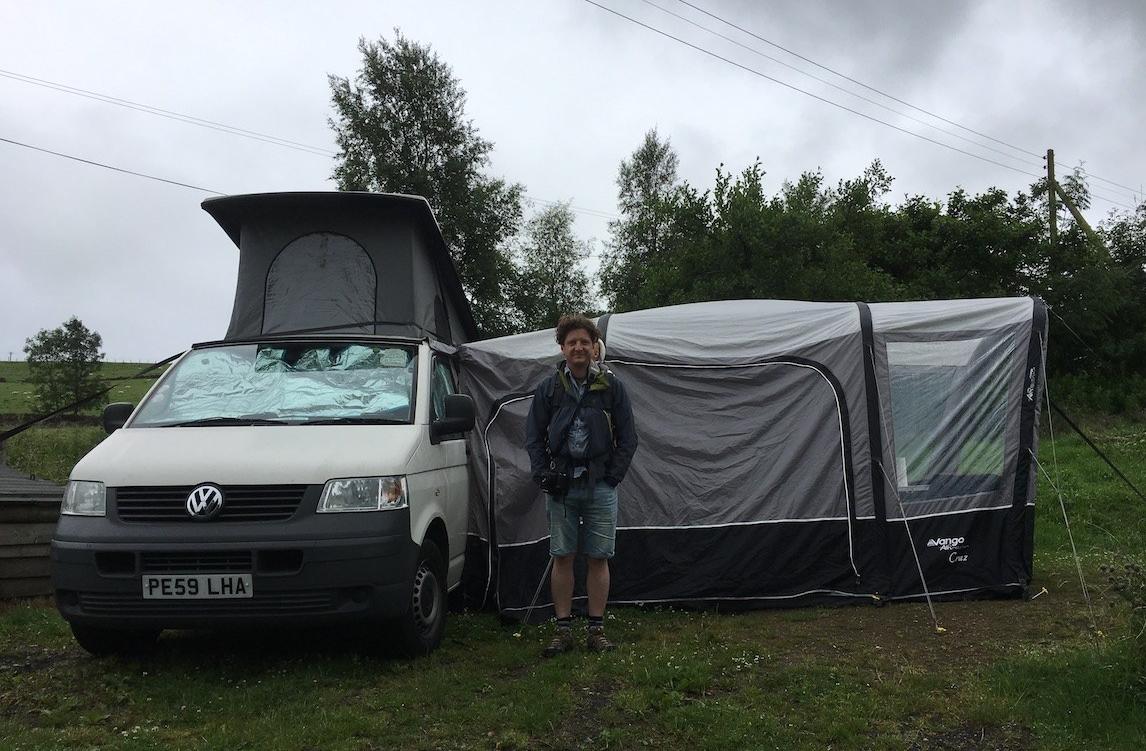
Clearly I’m biased, but a campervan is definitely the way to go if your budget will stretch that far. I’d recommend owning one, but there are places to hire them all over the place if you’re not up for that sort of commitment or financial outlay.
The benefit of vans over tents is that they’re warmer, quieter to sleep in, more secure and you can bring more stuff with you. Many vans will also have a fridge, hob and sink – much easier than setting up a camping kitchen outside a tent and useful for storing baby food and milk. A drive-away awning, which is basically a large tent that you attach to the sliding-door side of the van, provides extra space, and is particularly handy as a self-contained play area once your little one is crawling. Inflatable awnings are more expensive but much faster and easier to erect and strike than traditional tents with poles.
The major downside of a campervan is that you have to pack everything up if you want to go off exploring in it, whereas with a tent you can just jump in the car and go, leaving your whole camping apparatus in situ. Tents are also much less expensive than campervans to buy or hire of course.
When it comes to choosing a tent (or indeed a campervan awning for that matter), get the largest you can afford: large tents are slightly more time-consuming and complicated to erect than small ones, but not exponentially so, and if you’re stuck inside with a baby or toddler on a rainy day, you’ll want as much space as you can get. Essential elements are a covered porch area (ideally with a ground sheet) so you’ve got somewhere to cook and eat without getting food smells in your tent, as well as a place to store your pushchair and muddy shoes. An internal room is useful so you can sleep separately from your child. As with awnings, an inflatable tent will save you a lot of time.
Packing for camping with a baby
Don’t bother with suitcases and pillows. Designate a different colour pillowcase for each family member and use them to pack clothes into instead. Then cram all your pillow-suitcases into a black bin bag so they don’t get grubby in transit or when setting up camp. Half way through the trip you’ll need to consolidate clean clothes into one pillowcase and dirty clothes into another.
Pack far more clothes than you think you’ll need. Camping with a baby can be a messy business.
Choosing a campsite for camping with a baby
Tastes vary – I like my campsites relaxed, peaceful and in wild and beautiful locations, and am not too fussed about the state of the toilet facilities, while some people value a neatly maintained shower block and aren’t bothered by the immediate surroundings. The good news for new parents is that camping with a pre-crawling baby is much the same as camping child-free, so you can choose your campsite based on the same criteria you would have done in the past, whatever your priorities happen to be.
Once your baby is heading towards toddlerhood, facilities like a play area, beach or on-site petting zoo are a major boon. If you’re staying for any longer than a few days, laundry facilities come in very handy, allowing you to cut down on packing.
Choosing a pitch for camping with a baby
Again, tastes vary. We usually prefer to be as far from the toilet block as possible, as this tends to be the least busy area of a campsite, but there are benefits to being closer to the facilities once you’re camping as a family. Bear in mind that walking anywhere with a toddler takes a long time.
If your baby is sensitive to noise, somewhere without a lot of passing traffic will give you all a better chance of a good night’s sleep. And request a pitch away from the campsites internal roads once your toddler is on the move – many campsites have a car-free recreation area surrounded by plots. These tend to be noisier, with children playing first thing in the morning and then into the evening, but knowing your little one will be out of the way of traffic outweighs this slight inconvenience.
Setting up camp with a baby

If there are only two adults in your party, try to time your arrival for when your child is sleeping – unless you’ve opted for a small tent, pitching camp single-handed while your other half holds the baby is challenging. Other options are for one person to wear the baby in a sling as you pitch the tent together, or to set up a travel cot to serve as a play pen. Going camping with friends or family members offers the distinct advantage of there always being someone else around to hold the baby while you get things done, of course.
Sleeping on a camping trip with a baby
Dress your child in extra layers to minimise the chance of them waking up cold in the night. A 3.5 tog sleeping bag on top of a long-sleeved vest and all-in-one sleep suit or pyjamas will keep your baby toasty in temperatures as low as 14 degrees centigrade. If you don’t have a sleeping bag that thick, doubling up lighter weight ones will work just as well.
Bear in mind that if you’re camping in the summer in the UK it gets light early and dark late, not ideal for babies and toddlers who can only sleep in a blackout. travel cot cover. We put the girl in a pop-up tent travel cot within our awning or campervan and put a breathable blanket over the top, which does the same job, though less elegantly.
Noise is trickier to deal with but choosing a quiet pitch will help. White noise could come in handy too. The earlier you start travelling with your baby, of course, the more likely she’ll be to sleep through the sort of background noise you get at a campsite.
In campervans with a pop-top roof, the bed in the roof is a good place to put your baby if you don’t want her in your bed with you. The baby girl’s pop-up tent travel cot fits our roof area perfectly, and it means she’s in no danger of rolling out. When she outgrows the tent we’ll start using the safety net that came with our van (it was converted from a panel van by a guy who went camping a lot with his children) to keep her safe in the roof at night. We sleep in the rock ‘n’ roll bed (see picture below), leaving the awning free for any friends or family camping with us.
As already noted above, a large tent with an internal room will enable you to sleep separately from your child, and more importantly, it’ll give you the option to hang out comfortably inside after your baby has gone to bed and while she’s napping.
Feeding on a camping trip with a baby
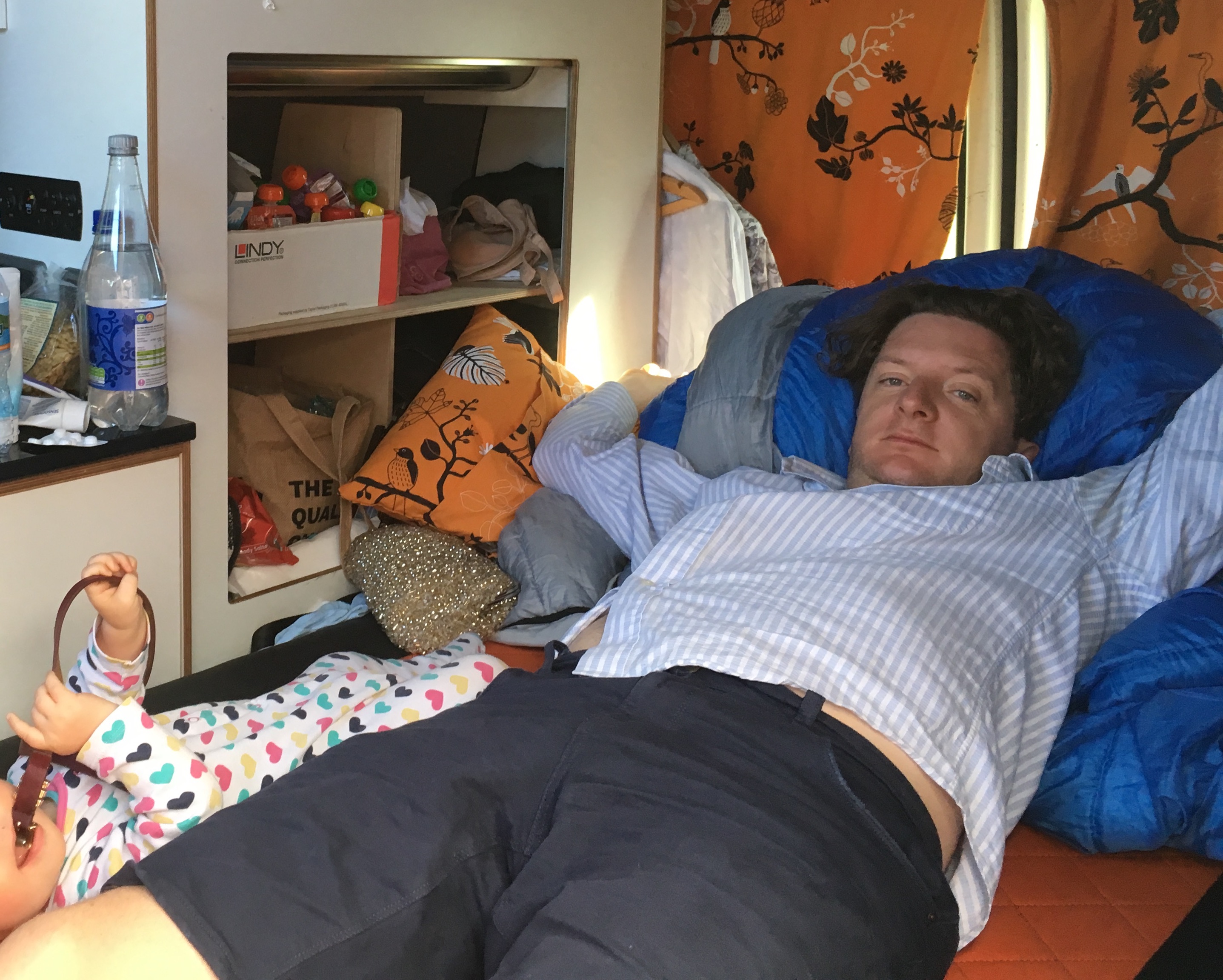
As far as I’m aware, there isn’t really a way of feeding your baby while camping that isn’t a bit of a faff. There are lots of options available, but none are without their drawbacks.
A foldable camping high chair is very lightweight and packs away small but the tray is so flimsy that your child will end up covered with food (even more so than they already do). Standard travel booster seats (we have this one) come with sturdier trays, but you’re unlikely to have a chair with you that you’ll be able to attach such a booster seat to safely. That means feeding your child with the booster seat either on the ground or on a table, neither of which is ideal. A lap belt will keep your baby on your lap but means you’re stuck in one place until she’s finished her meal – you’ll also end up covered in food, which is more of an issue that it would be at home because you probably won’t have access to a washing machine. On balance, we find the lesser of these evils is the inconvenience of feeding the baby girl on the ground, so we use a booster seat.
Jars and pouches of readymade baby food come in very handy while camping, since you probably won’t have the space, utensils or storage options available for making your own. Now that the baby girl eats most things we just plan our meals so they’ll appeal to her too, but when she was smaller we always made sure to have a packet of couscous with us on camping trips that we’d add to readymade baby food for extra texture and bulk. That and bits of cucumber, bread and yoghurt mostly formed her diet on those early trips.
For bottle-fed babies, cold water sterilising is your best bet. You’ll need sterilising tablets or liquid and a large plastic container with a lid. See this post for how to do it.
Nappy changing and potties when camping with a baby
We try to keep nappy changing to one area in the campervan or awning for the sake of convenience and hygiene but inevitably end up changing the baby girl here, there and everywhere. We just take her nappy change wallet and stow extra nappies, wipes and biodegradable nappy sacks (important in this context to keep odours to a minimum) in an easy-to-access place in the van for refilling when necessary.
I’m not usually a fan of one-use cleaning products, but antibacterial wipes are an important bit of kit when it comes to camping with a baby or toddler still in nappies. We keep bottles of hand sanitizer all over the place too, as with the best will in the world you’re not going to be washing your hands on a camping trip as frequently as you would be at home, and sanitising is better than nothing.
Don’t forget to pack a potty if your toddler is potty trained, as well as some biodegradable potty liners. Your child will most likely use these on camping trips long after she’s toilet trained – far preferable to a long walk to the toilet block in the middle of the night if she wakes up needing a wee.
Bath time when camping with a baby

Bath time is an important element of lots of babies’ bedtime routines but you’d be hard pressed to find a bathtub at most British campsites (props to Gwithian Farm Campsite in Cornwall, which has both a family shower room and a bathtub for babies). The solution is to pack a small inflatable paddling pool, which you can either use in the shower block or in the porch of your tent if the weather is warm enough. Option two is more labour-intensive as you’ll need to carry water from the nearest tap and heat it up on your camping stove, but it’s nicer being able to do nappy and pyjamas within the quiet and privacy of your own tent, rather than in a bright shower block.
Parents of toddlers who don’t require a bath to get into sleep mode but are grubby enough to need hosing down before bed can experiment with taking their little ones into the shower with them, though I’d only recommend it once your baby can confidently sit by herself. As with showering after swimming, this requires a bit of forward planning to make sure you can get your toddler dry and dressed before they get cold, while also getting dressed yourself. Since the baby girl has got the hang of standing up in the shower I’ve taken to leaving her in the shower while I get dressed (always read to leap to her rescue should anything untoward happen of course). Doing it this way means we both stay warm.
Insects when camping with a baby
Insects are more of an issue in some areas of the UK than others, so look into this before you decide on a campsite if you know your family is likely is be bothered by bugs. Wherever you go however, it’s a good idea to take child-friendly insect repellent with you, and to keep tent doors zipped up at all times, especially in the evening. We learnt this the hard way during a camping trip in the Yorkshire Dales in summer 2017, ending up with an awning full of midges and a million bites each – not fun.SaveSave

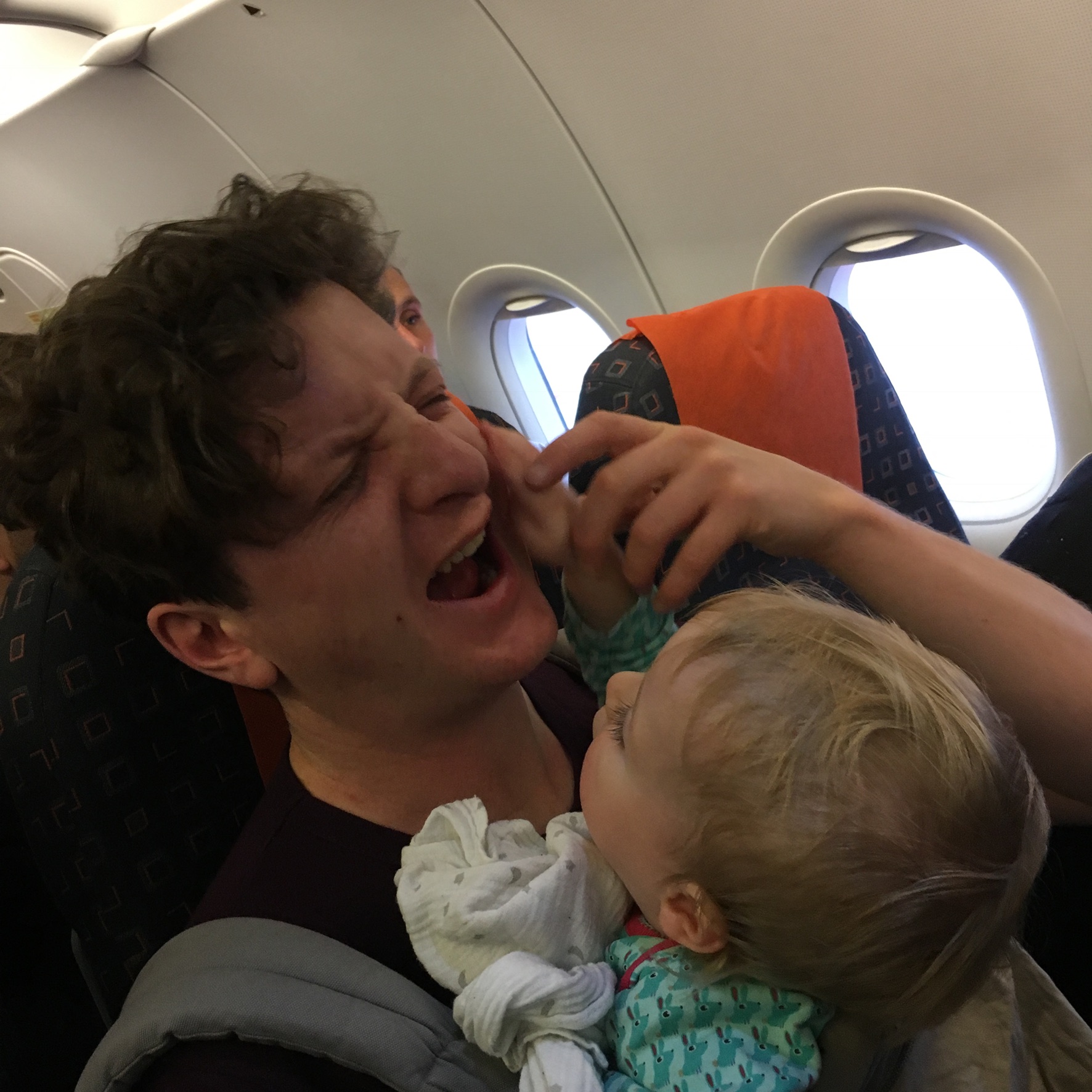 The sooner you start flying with your baby, the easier it is. You probably spend most of your time with your newborn in your arms anyway, so the fact that you’re on a plane is almost irrelevant. The chief challenge of flying with babies is keeping them entertained and newborns don’t require much in that regard, so if you have the opportunity to go abroad with your baby when she’s still very little, go for it. The other benefit to starting when she’s small is that it’s good practice for flying with her when she’s bigger and more aware of her surroundings: she’ll already be familiar with the strange environment of an aeroplane, you’ll be more confident and you’ll both have a better experience as a result.
The sooner you start flying with your baby, the easier it is. You probably spend most of your time with your newborn in your arms anyway, so the fact that you’re on a plane is almost irrelevant. The chief challenge of flying with babies is keeping them entertained and newborns don’t require much in that regard, so if you have the opportunity to go abroad with your baby when she’s still very little, go for it. The other benefit to starting when she’s small is that it’s good practice for flying with her when she’s bigger and more aware of her surroundings: she’ll already be familiar with the strange environment of an aeroplane, you’ll be more confident and you’ll both have a better experience as a result.
